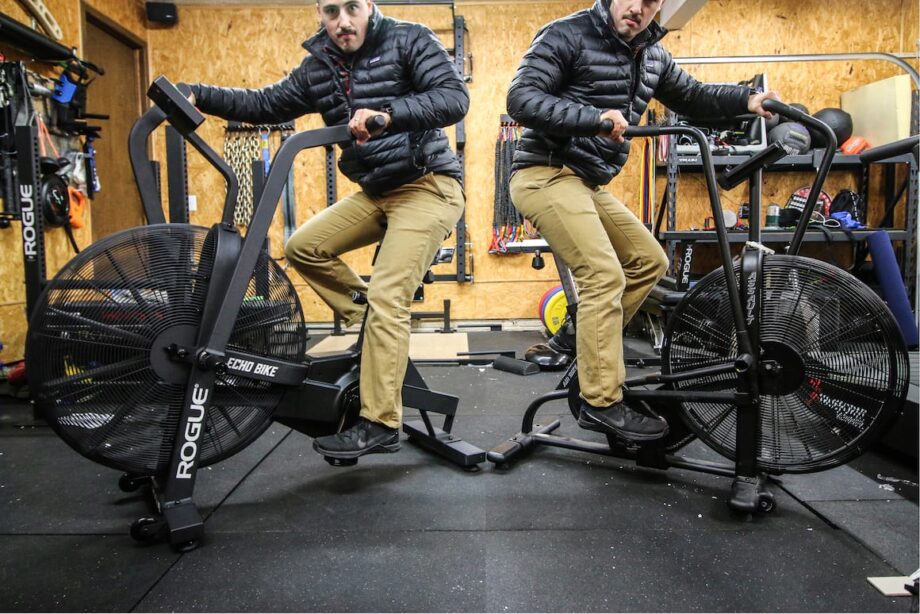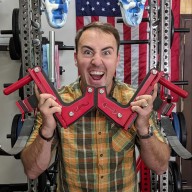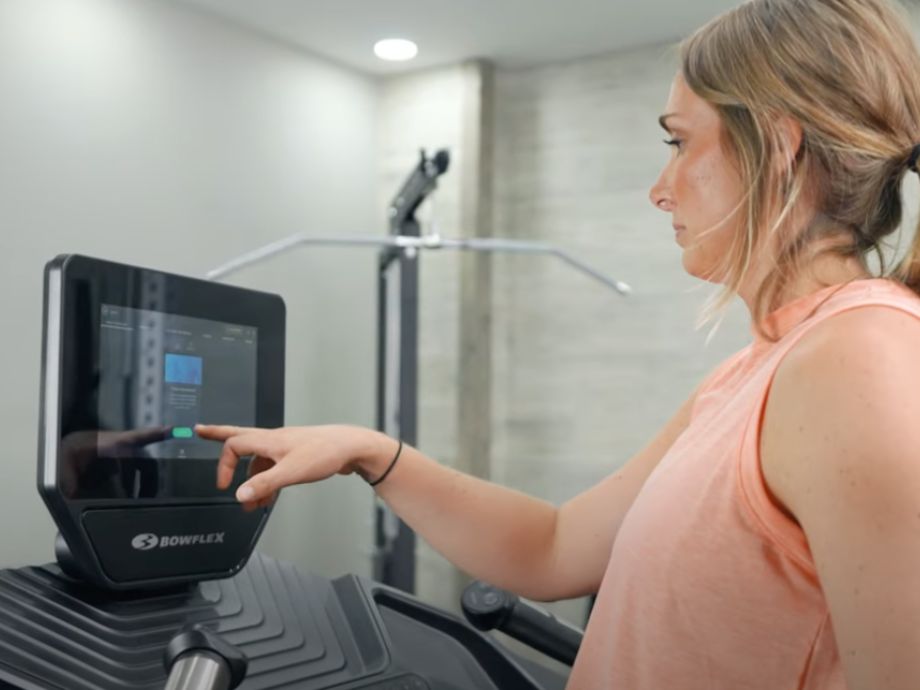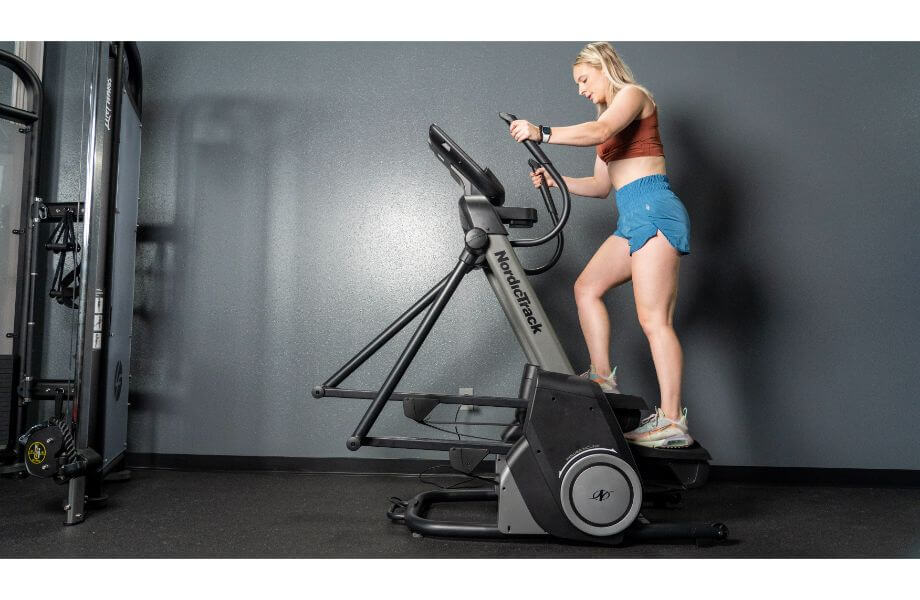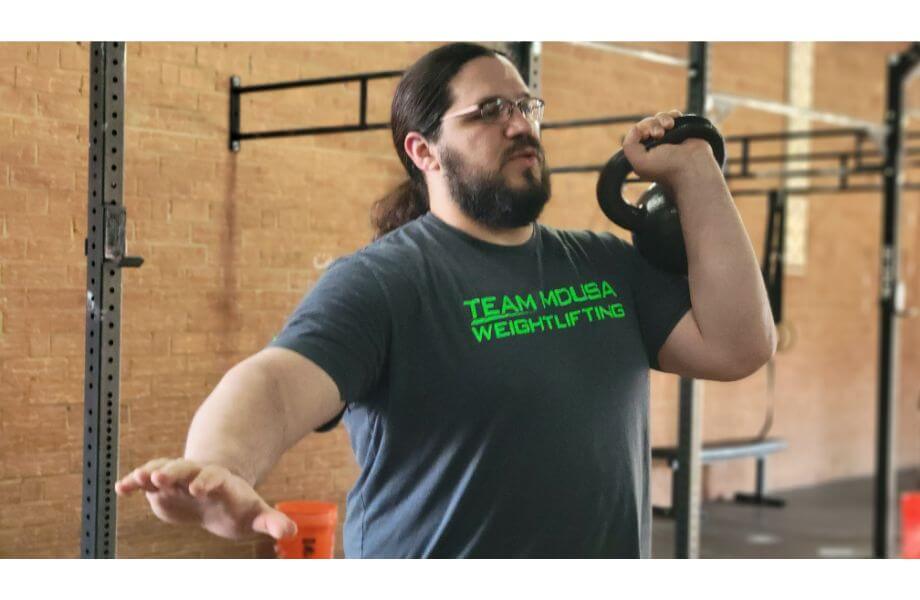Garage Gym Reviews collaborated with Jacob Penner, USA Weightlifting Level 1 Coach, NCSA Certified personal trainer, and CrossFit Level 1 Trainer to give expert advice on this topic.
Hey, everyone—Coop here from Garage Gym Reviews. I want to dive into a question that has been coming up a lot in our community lately:
“How can I implement cardio into my workouts without sacrificing muscle mass?”
If you’re focused on strength training, the thought of adding cardio to your workout routine might make you a little uneasy, and look, I don’t blame you. As someone who prefers spending my workouts in front of the bench press in my garage, I’m not always interested in cardio either. Not to mention, there are studies out there that show cardio is the best way to reduce body mass, which, let’s be honest, isn’t exactly what we all want to hear when we are hitting the weight rack…but that doesn’t mean we should dismiss it completely.
From the equipment side of things, there are a ton of great options for adding cardio and conditioning into your home gym routine which we will cover in a bit. But, I want to take the time to cut through all the noise around the topic of cardio and strength training and get straight to the facts.
So, I sat down with my buddy and USA Weightlifting certified coach, Jacob Penner, to get his two cents on the topic. Together, we created this guide so that you can work cardio training into your routine without losing those hard-earned gains. Let’s get into it.
How Does Cardio Affect Muscle Gain?
Many of us have heard the hearsay around how cardio can potentially affect muscle gain, but a lot of us may not know what factors are actually contributing to muscle loss and what the relationship between cardio and muscle gain/loss really is. So, Jacob and I are going to start with some basics and take this on Q&A style.
How Does Cardio Affect My Body?
Cardio is considered a catabolic exercise. Now, I’ll be honest, when Jacob told me this, I didn’t know what it meant either, but it’s basically just a fancy way of saying that cardio is a process that breaks down both fat and muscle.
Going for a run, hitting the trails for a hike, swimming, or even taking a joy ride on your bike are all considered forms of catabolic exercises. Although these exercises break down fat and sometimes muscle if done too much, they’re important for keeping a healthy heart and set of lungs.
What about strength training?
On the opposite side of the spectrum are anabolic exercises, which are what we consider strength training. When it comes to this type of exercise, it’s all about the gains. According to Jacob, anabolic exercises help us build and maintain muscle through a process called protein synthesis. So, while we are doing barbell rows, hitting some weighted pullups or getting in a few bench presses, our body is working hard to build and maintain muscle mass on a granular level.
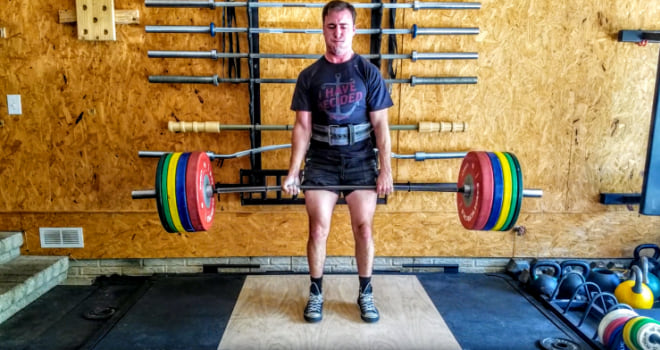
What Are the Main Ways Cardio Interferes with Muscle Gain?
Now that we’ve covered the basics on how cardio and strength training affect your body, let’s cut to the chase and dive into the different ways cardio can slow down muscle gains. According to Jacob, there are two major issues that contribute to muscle loss—caloric deficit and overtraining. Let’s get into it.
#1 Caloric Deficit
When you add more cardio to your workout routine, you’ll burn more calories initially than you would by just lifting weights. Which sounds great, right? And it is for some folks because burning calories is awesome for losing fat, but if you’re trying to increase or maintain muscle mass you’ll want to approach caloric deficit with caution.
Caloric deficit happens when the calories you intake are lower than the calories you burn. I know what you’re thinking. So, what does this have to do with gains, Coop? Good question. Basically, when you’re in a caloric deficit your body will tap into whatever it can for energy, so when your body is not converting food into energy it can tap into your body fat, and muscle mass too.
All that fancy science talk is just to say that in order to avoid your muscles breaking down you’ll need to eat enough calories so that your body is not in a caloric deficit.
#2 Overtraining
Although training 6 or 7 days a week sounds like an impressive and not-so-subtle gym flex, if you’re really serious about your gains you’ll want to take the opposite approach and give your body time to rest and recover. In fact, some of the most dedicated lifters we know have consistent rest days in their schedule to give their muscles time to repair and mend.
According to Jacob, the ideal amount to lift is 3-4 times per week. “You may find that more recovery time means better lifting sessions with heavier weight,” Jacob says. “Without recovery, your body is vulnerable to illness and preventable injuries.”
The point we’re getting at here is, if you don’t give your body the proper rest it needs, you will not gain the muscle mass you’re hoping for.
What Are the Benefits of Cardio?
If there is one major takeaway we hope you get from reading this, it is that you need to be strategic with your workouts and adjust both your strength and cardio training in ways that reflect your individual fitness goals.
“It is possible and probable to make progress in both cardio and strength training,provided you are recovering well outside of the gym through consistent sleep and nutrition,” Jacob says.
So now that you have your facts straight around the relationship between cardio and muscle mass, Jacob and I are going to cover some ground on why you should consider cardio in the first place.
Some of the benefits of cardio include:
- Better blood pressure
- Reduced risk for Type 2 diabetes
- Decreased risk of heart failure
- Weight management
- Improvement in metabolic health
Another benefit to cardio is the increase of V̇o2max, which, according to Jacob, is the maximum amount of oxygen you can take in during exercise.
“With the increase of Vo2max, muscles work more efficiently than before,” Jacob says. “Your muscles are responsible for providing the energy necessary to complete a workout. With muscle efficiency increasing, you’ll have more energy for heavier and tougher lifts.”
So what’s the point to Jacob’s science rant? Let’s break it down:
More oxygen = more muscle efficiency
More muscle efficiency = more energy
More energy = heavier weights
Heavier weights = gains for days
How Can I Blend Cardio and Strength Work?
We’ve covered the benefits to both cardio and strength work, so now let’s talk about some easy ways you can effectively blend the two workouts.
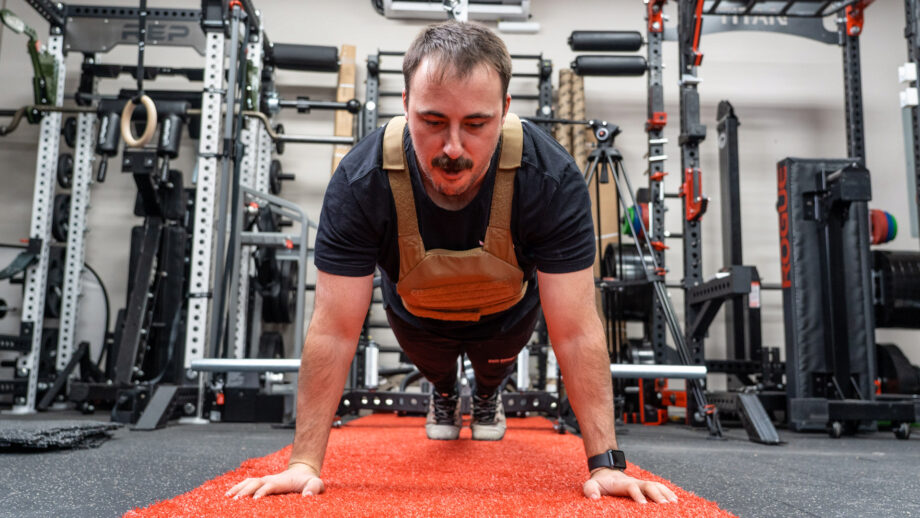
#1 Choose HIIT Workouts
When it comes to cardio, you can group exercises into a few categories:
- Low-intensity cardio: This form of cardio is practiced at a steady pace and can contribute to weight loss by burning both fat and muscle.
- High-intensity cardio bursts: This type of cardio can cause a bigger heart rate spike, which burns fat and builds lean muscle mass.
- High-intensity interval training (HIIT) with barbells, free weights, and medicine balls can combine heart pumping cardio with elements of strength training, which is where the name HIIT comes from. Examples of HIIT workouts include EMOM’s (every minute on the minute), AMRAP’s (as many rounds as possible), WOD’s (workout of the day), and Tabata.
#2 Adjust your Caloric Intake
What you’re eating and how many calories you’re eating every day play a big part in muscle growth and loss. People who lift weights for exercise need more protein and calories to gain muscle mass.
The process is similar for people who participate in hardcore cardio but don’t want to lose tons of muscle. Cardio tends to burn more calories in the short term versus lifting weights, and it is important to replenish those calories to avoid losing muscle mass. A calorie deficit is useful for losing weight but is not ideal for people trying to gain or maintain muscle.
“If maintenance is the goal, keeping track of calories in (nutrition) versus calories out (exercise) is crucial to keeping current muscle mass stable,” Jacob says.“Figuring out where you are currently and where you want to be is helpful for correct nutrition and training that supports your goals.”
#3 Use the Right Equipment
Now onto my favorite topic, the equipment. When it comes to implementing cardio there are tons of options for some of the best cardio equipment that works a lot of different parts of your body at the same time and may even help you gain muscle while you’re at it. Let’s dive into some of my favorite options and how they can help with your fitness goals.
Related: Check out our CLMBR review
Exercise Bikes
For people who lift weights and wish to enhance their lower body mechanics, here are some of the best exercise bikes. According to a study done by the American College of Sports Medicine, “Cycling is superior to treadmill endurance training for an individual with the goal of developing strength in a multi-joint movement.” The motion used in cycling can keep your joints limber for exercises like the back squat and leg press. Not only will you be improving joint movement but you’ll also be strengthening your heart and lungs in the process. It’s a win-win in my book.
Here are a few recommendations for the best air bikes:
Schwinn IC4:
The Schwinn IC4 bike has over 100 adjustable levels of resistance that can strengthen a variety of muscles in your legs. Pedaling against resistance may help build muscle in the calves, quads, and hamstrings.
The Schwinn IC4, which is priced under $1,000, works with paid apps like Peloton, which often has rides that incorporate hand weights (included with the bike) into the class. Also included is a heart rate armband monitor that connects via Bluetooth so you can be aware of your cardiac output.
Read my full Schwinn IC4 bike review.
Assault Air Bike:
The Assault Air Bike is in CrossFit gyms around the world for a reason: It gives you a heck of a workout. The bike uses a fan resistance that is increasingly challenging the harder you go. You will undoubtedly feel the burn in your legs when using it for HIIT workouts, as simple as 30 seconds on, 30 seconds off. It’s also a great recovery tool—air bikes are often on the sidelines at football games and other sporting events.
Coming in at just under $700, this is an affordable alternative to other air bikes like the Rouge Echo. The screen displays metrics in an easy-to-read manner and the bike itself is durable due to the metal construction. I would recommend this stationary bike due to its versatility and ability to be incorporated into already existing strength routines.
Check out my review on theAssault Air Bike
Treadmills
Power walking on an incline on a quality treadmill can tone a variety of leg muscles. When walking uphill, your body is forced to make adjustments, which can activate different muscles. It also increases the metabolic cost (the biochemical processes of expending energy). Incline power walking not only maintains muscle but it is also a low-impact option for cardio. Take a look at two of my favorite treadmills for power walking on an incline.
Echelon Stride:
The Echelon Stride treadmill is a well-priced option coming in at just under $1,500. It easily folds and stores, which makes it ideal for a garage gym. There are 12 levels of incline with a maximum incline of 10%. I would recommend setting the incline to the maximum you can tolerate to simulate a steep hill.
Power walking on an incline allows for lower-body muscle activation a person who weight lifts may not be able to target with traditional lifts. The Echelon Stride has an easy-to-read number display and a quick-select option to change the incline or speed in a flash. This treadmill is a good option for an affordable and lightweight (only 156 pounds!) piece of cardio equipment.
Check out my Echelon Stride treadmill review
Bowflex 10:
The Bowflex 10 treadmill has an impressive incline of up to 15% and even dips into -5% to simulate walking downhill. Walking downhill will activate your calf muscles and can be a good change from a high incline of 15%. This treadmill, which clocks in at under $2,000, is special because it adapts automatically as your fitness level improves so you’re always challenging yourself.
The Comfort Tech Deck has ergonomic cushioning for a softer landing and less impact on your joints. Jacob recommends “a low impact form of cardio” for days you may be “pushing a heavy squat.” The Bowflex 10 can give your body a break while still helping you get in a form of cardio.
Check out the Bowflex 10 Treadmill review here.
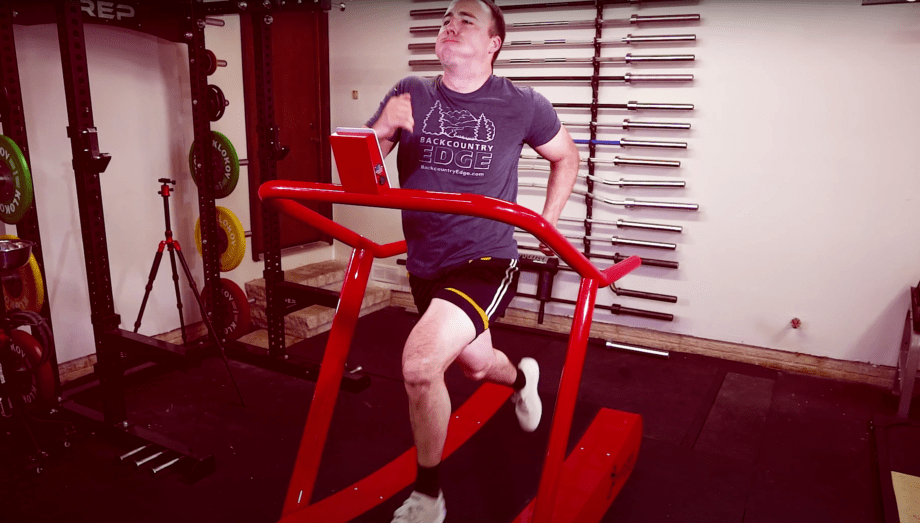
Rowing Machines
Rowing combines strength and cardio into one powerful movement. When using proper form, rowing recruits muscles from your abs, back, and legs as well as keeping your heart rate elevated. The fluidity of rowing helps with flexibility and can alleviate stiffness. This is a great low-impact option for those who don’t want to lose muscle gains. Take a look at my recommendations for best rowing machine
Concept 2 Model D:The Concept 2 Model D rower is one of my favorite rowing machines at any price point (this one is under $1,000). It has a number of built-in workouts including interval training and standard workouts, like the 500m row. The machine is incredibly easy to use—just sit in the seat and pull on the handles. It has a spiral damper with adjustable resistance settings between 1-10 and is only 57 pounds.The Model D is truly built to last due to its durable steel and aluminum frame. Both the rubber handlebars and padded seat were made with comfort in mind so you can focus on giving your all while rowing. I highly recommend this rowing machine to pretty much anyone. It’s great for a variety of fitness levels, is low impact, and is high quality. Check out my full Concept 2 Model D Rower review.
Hydrow: If you love technology-integrated workouts, the Hydrow is a great option for you. This rowing machine features a touchscreen display and front-facing speakers to fully immerse you in your workout. Electromagnetic resistance adjusts 240 times per second to accommodate your personal fitness level. The Hydrow is under $2,500 and has a variety of classes to stream that make you feel like you’re really on the water. This rowing machine is a great way to get your heart rate up in a way that won’t diminish previous muscle growth. Check out the Hydrow Connected Rower.
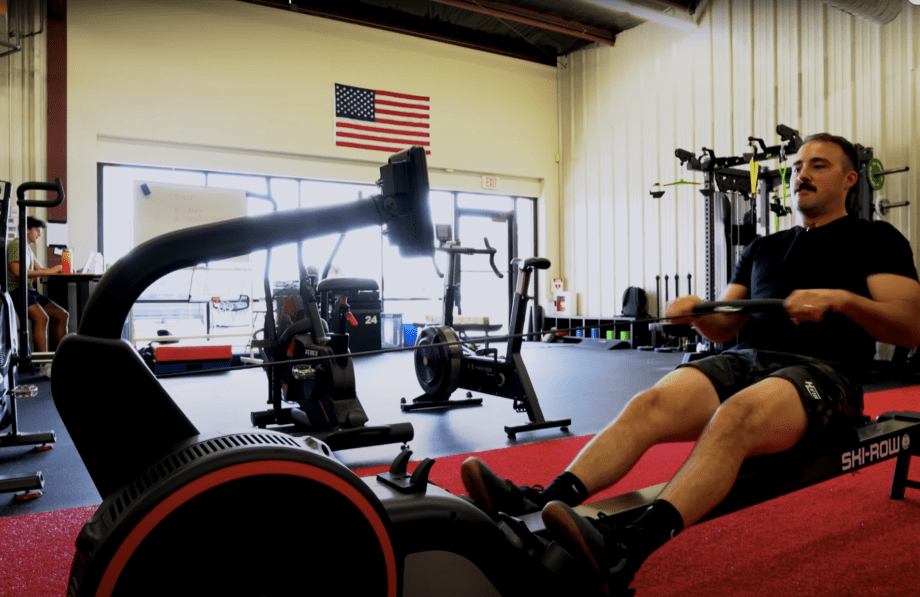
#4 Be Strategic about Cardio
According to a study from the Department of Health and Exercise Science at The College of New Jersey, when aerobic activity was performed 10 minutes before resistance training, participants did 9.1–18.6% fewer repetitions. Not only were participants doing less reps, but they were also using less power.
Essentially, you should lift or do resistance training before cardio activity. If you don’t, your performance can be compromised and you may not be able to be at your full potential since you’ll be maxed out from cardio.
Unless you have cardio-specific goals, keeping cardio-based workouts to a minimum is best for preserving your muscle. If your goal is to build muscle, focus on strength training exercises. Incorporating a form of cardio (cycling, incline walking, or rowing) two times a week is enough to get the benefits without compromising your muscle growth.
It is also better for muscle growth if you do cardio over short interval periods at a high intensity rather than lengthy and low intensity. This is due to your heart rate being higher during short, intense bursts. A higher heart rate promotes increased muscle mass and burns more fat.
#5 Watch Out For Overtraining and Burnout
As important as consistency in the gym is, it’s equally important to take consistent rest days. Without proper rest and recovery, you’re at risk for overtraining and burnout. Experts recommend listening closely to what your body is telling you in order to decide if you should train or rest on any given day.
Be on the lookout for these symptoms:
- Chronic pain: If you notice your light jog feels less like a warm-up and more like swimming with two boulders tied around your legs, it might be time to take a rest day. Consistent training without adequate rest can cause easy exercises to feel unusually difficult and can cause unnecessary injury.
- Fatigue:If you’re overtraining, you may feel especially tired doing daily activities like climbing the stairs or doing the dishes.
- Trouble Sleeping: Even with extreme fatigue, you may still have trouble sleeping because your body is stressed and unable to repair itself properly.
- Health Issues: When the body doesn’t have time to repair itself properly, it isn’t at its strongest to fight off sickness. You may find yourself constipated, having no appetite, or getting sick more frequently.
Coop’s Takeaway
After talking to Jacob, I learned that while everyone seems to have various opinions on this, what it comes down to is this—excessive cardio can lead to muscle loss, but cardio is not worth knocking all together since it is such an important factor for maintaining a healthy heart and lungs.
“By focusing on resistance training before adding in short bursts of high-intensity cardio,” Jacob says, “you’ll maximize the benefits of both (cardio and strength training). It’s also important to make sure your caloric intake is sufficient for your goals to gain or maintain muscle.”
When it comes to cardio, going with low-impact exercises like cycling, power walking on an incline, and rowing have been a win win for me as they help you work to build lean muscle mass and increase Vo2 Max. But at the end of the day, it comes down to listening to your body and watching out for signs of overtraining and burnout.
Don’t forget to recover as hard as you exercise.
Citations
RezuÅŸ, Elena et al. “Inactivity and Skeletal Muscle Metabolism: A Vicious Cycle in Old Age.” International journal of molecular sciences vol. 21,2 592. 16 Jan. 2020, doi:10.3390/ijms21020592
Ratamess, Nicholas A.; Kang, Jie; Porfido, Tara M.; Ismaili, Craig P.; Selamie, Soraya N.; Williams, Briana D.; Kuper, Jeremy D.; Bush, Jill A.; Faigenbaum, Avery D. Acute Resistance Exercise Performance Is Negatively Impacted by Prior Aerobic Endurance Exercise, Journal of Strength and Conditioning Research: October 2016 – Volume 30 – Issue 10 – p 2667-2681 doi: 10.1519/JSC.0000000000001548
de Araujo GG, Papoti M, dos Reis IGM, de Mello MAR and Gobatto CA (2016) Short and Long Term Effects of High-Intensity Interval Training on Hormones, Metabolites, Antioxidant System, Glycogen Concentration, and Aerobic Performance Adaptations in Rats. Front. Physiol. 7:505. doi: 10.3389/fphys.2016.00505
Gergley JC. Comparison of two lower-body modes of endurance training on lower-body strength development while concurrently training. J Strength Cond Res. 2009 May;23(3):979-87. doi: 10.1519/JSC.0b013e3181a0629d. PMID: 19387377.
McCarthy, John J; Esser, Karyn A Anabolic and catabolic pathways regulating skeletal muscle mass, Current Opinion in Clinical Nutrition and Metabolic Care: May 2010 – Volume 13 – Issue 3 – p 230-235. doi: 10.1097/MCO.0b013e32833781b5
Silder, Amy et al. “Predicting the metabolic cost of incline walking from muscle activity and walking mechanics.” Journal of biomechanics vol. 45,10 (2012): 1842-9. doi:10.1016/j.jbiomech.2012.03.032
Aicale, R et al. “Overuse injuries in sport: a comprehensive overview.” Journal of orthopaedic surgery and research vol. 13,1 309. 5 Dec. 2018, doi:10.1186/s13018-018-1017-5
Pinckard, Kelsey et al. “Effects of Exercise to Improve Cardiovascular Health.” Frontiers in cardiovascular medicine vol. 6 69. 4 Jun. 2019, doi:10.3389/fcvm.2019.00069


